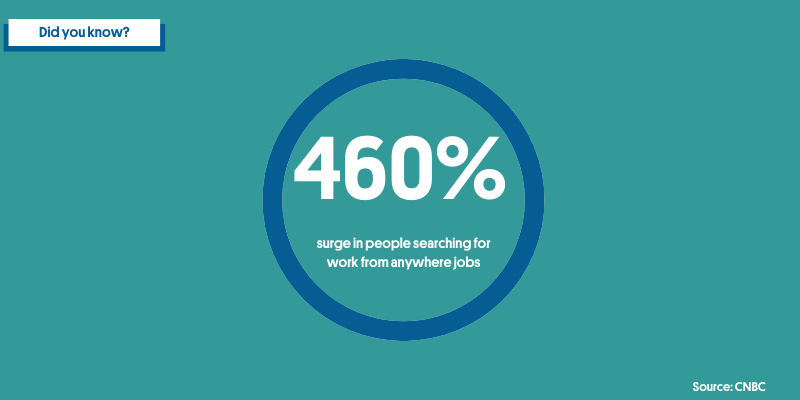How to Grow Your Remote Business Globally: Strategies to Expand Global Teams

According to some research , the number of people now searching for remote jobs has gone up 460%. Because of this, many companies are now considering hiring globally to expand their remote teams.

However, if you’ve never hired internationally before, you’ll want to identify a good strategy that will set your business up for success.
Keep reading, and we’ll fill you in on all you need to know about growing an international business with effective remote teams.
Where Do You Start to Expand Globally?
If you’re thinking about starting your global business, you’ll first need to start with your recruiting process. Because of how challenging this can be, you’ll need to think about which tools you’ll need to have a successful hiring process.
You’ll need to identify the best global talent, but you’ll also want to be compliant when hiring those teams. This is where a global recruitment process outsourcing (RPO) company is hiring. These companies are experts in the rules of employment in different countries, and you can maintain your hiring process while not worrying about learning the various laws.
You’ll also need to consider what is best for your company. For example, what roles do you need to fill, and which positions are suited for international talent?
Do you want to hire employees in certain time zones? This can affect your company, but there are ways that you can work around it. You may even want to consider grouping your teams into clusters and dividing your team up that way.
There are many more strategies that you can use to build your remote business around the globe, and Josh Ramsey, Senior Enterprise Account Executive of Recruiter.com, and Eryn Marshall, Lead of Talent Acquisition at Oyster, sat down for a webinar to discuss different strategies. You can view the webinar on YouTube here:
What Are the Challenges?
There are many challenges that your business will face when you’re trying to grow internationally. However, it would be best if you first focused on having a good talent acquisition process.
You’ll need to identify what talent you need and then figure out where to find that talent in the international job market. Hiring globally can be challenging because of cultural differences, time zone issues, and electronic communication. In some cases, there may even be unconscious biases that are hindering your hiring process.
One way to navigate this is by evaluating what you need from the employee. Figure out what qualifications are necessary. If you have too many qualifications that aren’t necessary, it can be hard to find the perfect candidate, even if you’re looking globally. It would be best if you defined precisely what you want to get exactly what you need.
Keep in mind that since you’re hiring globally, you might get more applications since you are removing geographical constraints. Getting a high volume of applicants can be overwhelming for some companies, so you may want to invest in tools that can help automate different parts of your recruiting process. You’ll also need to consider how many candidates you wish to review and manage.
Even though the people you hire will work on a remote team, you should still consider the company culture. You’ll want to hire someone who will fit in well with your company, even through an online environment.
Consider time zones as well. It would be best to think about this early because it will dictate how your teams work and communicate. There are many tools out there that you can use to help you keep track of what employees are in what time zone. You’ll also want to incorporate asynchronous communication into your company. This will make communicating easier when you have one employee in Japan and one in the United States, for example. However, you shouldn’t let the time zones hinder your hiring; running a productive company can still be possible even if your employees are in different time zones.
Benefits of Hiring Globally
While this might sound like a lot of work, there are many benefits to expanding your business to incorporate international employees.
Diversity
When you have an international workforce, diversity is just an added benefit. This can lead to more cultures and different ways of thinking, which can help your business with global growth. These cultures can create a vibrant company culture when they come together.
This will also help you share different cultures and perspectives. You can benefit from these other cultures coming together if you’ve identified candidates that meet your requirements and will benefit your culture and partner with a global PEO to hire them. This way, you don’t have to worry about visas or compliance. The PEO will handle all that for you, and you’ll enjoy all the benefits of having a diverse workforce.
Cost Effective
In some cases, it may be more cost-effective for companies to hire outside their own country. Some areas, like Latin America, have candidates who will work for much cheaper. Companies looking for ways to save money and still find the best talent should open their doors to global talent.
Increase in Talent Pool
If you feel like you have exhausted all of your options in your country for a specific type of candidate, you may want to expand your search. Opening your company to hiring globally can be a great way to find that perfect candidate without settling. You may also find new candidates that you can add to your talent pool and use in the future.
Global Expansion
Having candidates in different countries can also give you access to international markets in that area. These candidates could help bridge the connection to offering services and business overseas and promote international trade.
For example, a local person knows more about their company culture and can offer a good relationship that will help you define your business strategy in those foreign markets. Because of this, many companies are focusing on a strategy to “go local and grow local.”
How Do You Create a Sense of Team in a Remote Environment?
Creating a global company is excellent, but you’ll need to have a sense of team and company culture in the remote environment to be successful. But making this environment is challenging, primarily when your team is spread across different time zones. Thankfully, it’s possible.
Consistency
It would be best if you were consistent in the way that you communicate with the team. For example, if one team uses Slack, ensure all other team members also use Slack. If you’re using Zoom, the whole company should be using Zoom.
This will make it much more consistent and accessible for everyone to have a sense of structure in a remote environment. You’ll also want to be compatible with company culture initiatives.
For example, you might want to offer consistent employee Zoom happy hours or other team-bonding events. However, if you submit an event to one team, you’ll also want to include it with other teams around the globe.
Onboarding
Onboarding is harder to do when you’re in a fully remote environment. You’ll have to put more effort into building relationships with new hires and ensuring they feel welcomed and comfortable. In some cases, you may have to have more virtual meeting rooms. You may also want to consider having your camera on so everyone can recognize each other.
You’ll also want to help remote employees understand the processes and tools. They need as much information as possible on how to do their job. You should also offer an open-door policy where people feel like they can feel free to ask questions. You may also want to consider giving them an onboarding buddy so that they feel less alone during the onboarding process.
It would be best if you also had your employees schedule one-on-ones to meet the team they’ll be working with. While these meetings aren’t as natural as bumping into people at the water cooler, it’s the next best thing to set your remote employee up for success.
Communication
An asynchronous communication schedule can also help keep all employees in the loop throughout the company. You can use many different tools, including email, Slack, Microsoft Teams, and Zoom. With Slack or email, you can schedule your messages and emails to send at a more appropriate time for employees in another time zone.
You may also want daily or weekly check-ins with your other team members, managers, and employees. You can use this to clarify miscommunications and find issues you’ll need to address.
A global remote company needs communication to survive and thrive.
Start Hiring for Your Global Remote Teams
These are only a few things to consider when hiring for your global remote teams, but Recruiter.com can help!
We have the experience and tools to help you grow your business, including recruiters on demand and powerful AI sourcing software. Also, as a company whose workforce is remote, we know how to create successful remote teams.
Contact us today for help to build your global remote teams.
Get the top recruiting news and insights delivered to your inbox every week. Sign up for the Recruiter Today newsletter.

